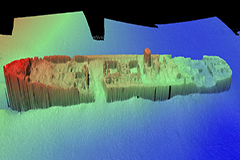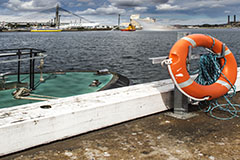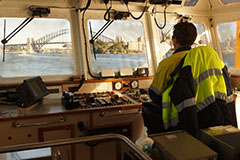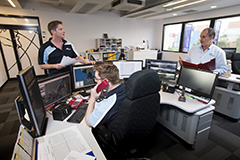Pilotage Procedure
Pilotage is compulsory for all vessels 30m and over in length, unless exempted under section 75 of the Marine Safety Act 1998.
The services of a pilot can be obtained at any time with two hours' notice. Bookings are normally made through a local Agent.
Single pilot boarding ground
Port Authority of New South Wales' Pilot Boarding Ground is 4.15 nautical miles east of Cape Solander (34º 01.02'S 151º 18.88'E).
By prior arrangement, Pilots may board four nautical miles east of Hornby Light (33º 50.05'S 151º 21.68'E).
Disembarkation is at the Pilot Boarding Ground off Botany Bay.
phone: +61 2 9296 4999
email: [email protected]
All vessels under the conduct of a licensed Pilot or exempt Master are required to briefly test their thrusters (if equipped) and engines astern before entering Port limits.
Port Authority will accept testing of the ships main engines astern within 24 hours of their arrival at Sydney or Botany Bay provided such testing can be supported by a main engine data logger readout.
Standard time in NSW (known as Eastern Standard Time) is 10 hours in advance of Coordinated Universal Time.
Masters should confirm the local time with their Agent prior to advising the expected arrival time. Due to daylight savings, local time in Sydney can differ from Brisbane during the summer months.
Masters are advised that Port Authority Vessel Traffic Service (VTS) is responsible for the VTS areas in the Ports of Sydney Harbour and Botany Bay.
Seagoing ships approaching Sydney Harbour or Botany Bay shall provide 4 hours’ notice of expected arrival time by email to: [email protected]
The message must include:
- Estimated Time of Arrival at Pilot boarding place
- Drafts forward and aft for arrival
- Displacement on arrival
- Confirmation that bow thrusters, if fitted 100% operational
- Information on any defects
- Length overall (LOA)
On receipt VTS will advise of the pilot boarding time and pilot ladder information by return email as follows:
Your 4 hour notice of expected arrival time has been received.
You are requested to call Harbour Control on VHF Channel 12 when 2 hours from the Pilot boarding area.
Engine test
Engines are to be tested astern before the pilot boards if they have not been tested in the last 24 hours.
Pilot ladder
Pilot ladders are to be rigged in strict accordance with Solas Regulation V/23, IMO resolutions and IMPA recommendations.
Pilot ladder to be rigged on the lee side to the swell when approaching the pilot boarding place, 2.5 / 3.5m above the water.
Two proper manropes without knots or monkey’s fists must be provided.
No tripping lines are to be attached to the Pilot ladder below the lowest spreader.
Where the freeboard of the vessel exceeds 9m and the use of a combined accommodation ladder and pilot ladder is necessary, the lower platform of the accommodation ladder should be about 6m above the waterline and, together with the pilot ladder and manropes, be secured to the ship's side.
Pilot hoists are not acceptable as an alternative to a combination ladder and may only be used with the agreement of the Harbour Master.
Failure to comply may delay Pilot boarding.
Engines are to be tested astern before the pilot boards if they have not been tested in the last 24 hours.
Anchoring
There are no recommended safe anchorages off the coast for vessels waiting to enter Sydney Harbour or Botany Bay. Anchoring is at the discretion of the Master, however it is highly recommended that vessels remain at least 3
nautical miles from the coastline and outside port limits.
For further information, refer to Harbour Masters Directions.
Approaches to Ports
Pilot vessels have yellow hulls and orange topsides on which the word ‘PILOT’ is painted. When engaged on Pilotage duty they carry international flag or light signals prescribed for Pilot vessels on station.
Pilot Ladder Requirements
Download the Required Boarding Arrangements for Pilots.
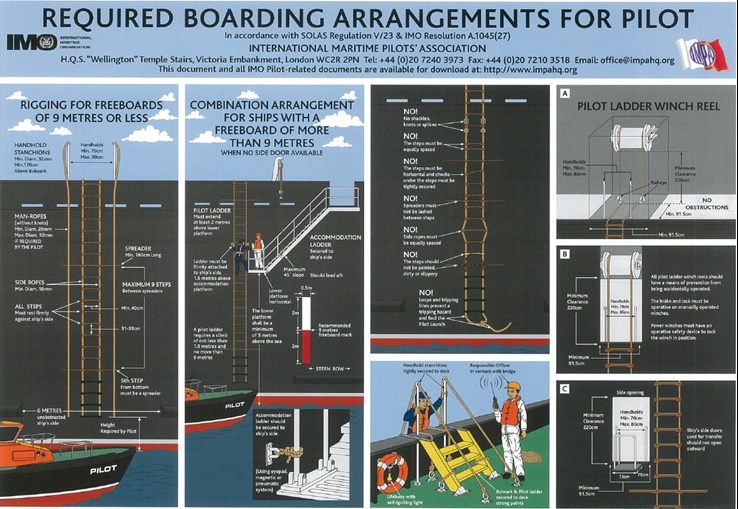
Tug guidelines have been established for minimum tug usage in average conditions. Each vessel is assessed on an individual basis and tug allocation is made with the following taken into consideration:
- Handling characteristics
- Bow thruster
- Bow and stern thruster combinations
- Twin screw and rudder combinations
- Active rudder
Pilots may vary the combination or number of tugs used for any movement, depending on experience, prevailing conditions or special circumstances that may apply in consultation with the Harbour Master. The guidelines may vary between Sydney and Port Botany.
Harbour Master's Directions
Port Authority Harbour Master has powers under the Marine Safety Act 1998 to direct and control the time and manner in which any vessel may enter or leave the port.
Safe navigation in the port area is maintained through an ongoing process of risk evaluation and mitigation of which Pilotage, Vessel Traffic Service and Port Procedures are all integral components.
Towage requirements in Sydney Harbour for various types and sizes of vessels can be found in the Harbour Master Directions.
For more information, download the Harbour Master Directions and associated Towage Tables.
Contact us on:
phone: +61 2 9296 4999
email: [email protected]




